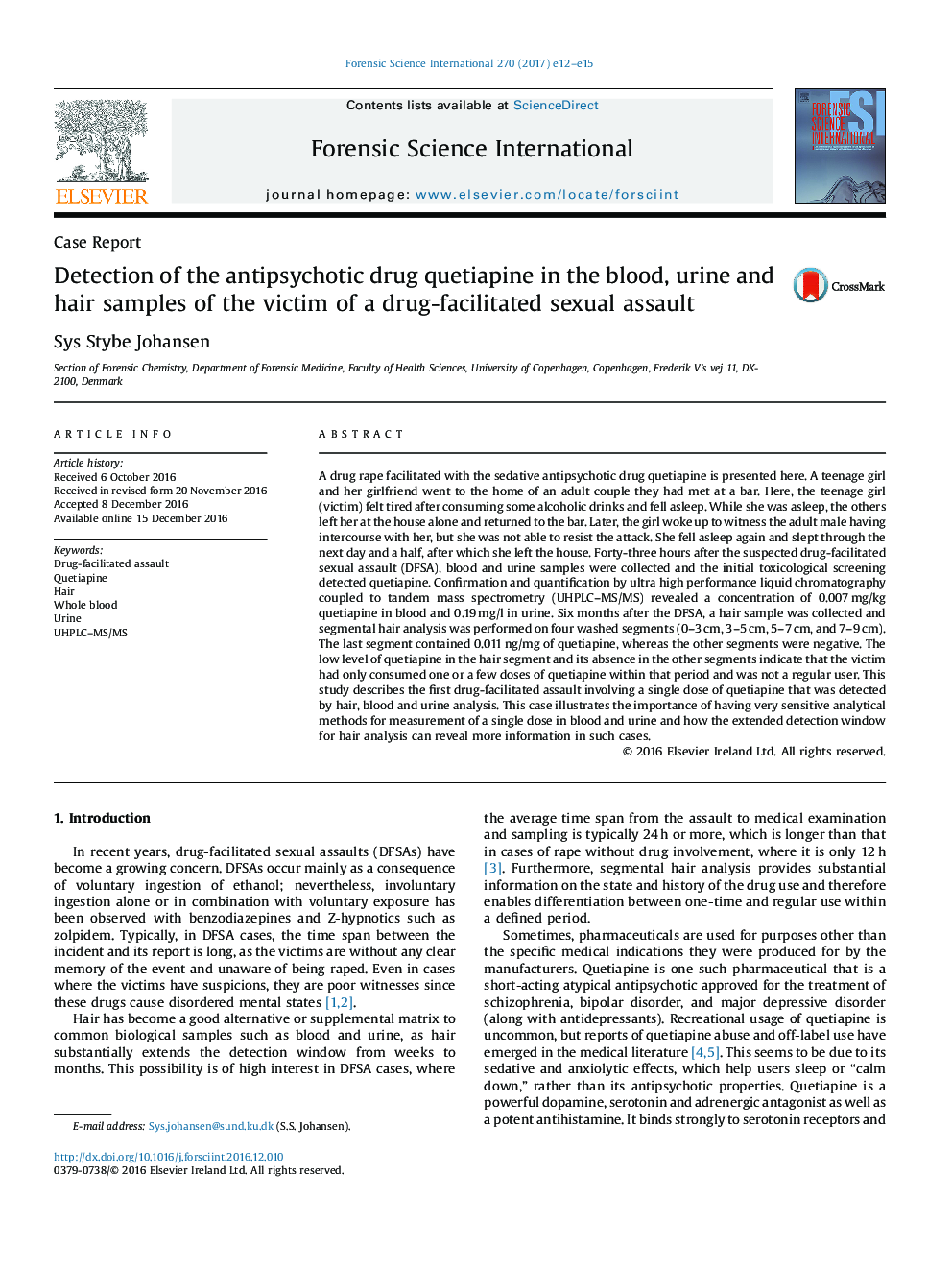| کد مقاله | کد نشریه | سال انتشار | مقاله انگلیسی | نسخه تمام متن |
|---|---|---|---|---|
| 6462594 | 1421980 | 2017 | 4 صفحه PDF | دانلود رایگان |

- A drug-facilitated crime involving quetiapine is described.
- Quetiapine concentrations were determined in blood, urine and hair.
- UHPLC-MS/MS methods were applied to measure the sub-therapeutic quetiapine levels.
- This is the first report of a single dose of quetiapine detected in hair.
A drug rape facilitated with the sedative antipsychotic drug quetiapine is presented here. A teenage girl and her girlfriend went to the home of an adult couple they had met at a bar. Here, the teenage girl (victim) felt tired after consuming some alcoholic drinks and fell asleep. While she was asleep, the others left her at the house alone and returned to the bar. Later, the girl woke up to witness the adult male having intercourse with her, but she was not able to resist the attack. She fell asleep again and slept through the next day and a half, after which she left the house. Forty-three hours after the suspected drug-facilitated sexual assault (DFSA), blood and urine samples were collected and the initial toxicological screening detected quetiapine. Confirmation and quantification by ultra high performance liquid chromatography coupled to tandem mass spectrometry (UHPLC-MS/MS) revealed a concentration of 0.007Â mg/kg quetiapine in blood and 0.19Â mg/l in urine. Six months after the DFSA, a hair sample was collected and segmental hair analysis was performed on four washed segments (0-3Â cm, 3-5Â cm, 5-7Â cm, and 7-9Â cm). The last segment contained 0.011Â ng/mg of quetiapine, whereas the other segments were negative. The low level of quetiapine in the hair segment and its absence in the other segments indicate that the victim had only consumed one or a few doses of quetiapine within that period and was not a regular user. This study describes the first drug-facilitated assault involving a single dose of quetiapine that was detected by hair, blood and urine analysis. This case illustrates the importance of having very sensitive analytical methods for measurement of a single dose in blood and urine and how the extended detection window for hair analysis can reveal more information in such cases.
Journal: Forensic Science International - Volume 270, January 2017, Pages e12-e15